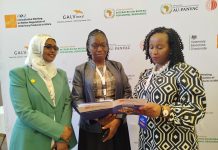By Sharon Atieno
Against intentions by the East African Community (EAC) to phase out imports of used clothing (mitumba) in the region, the Kenyan government has been urged to put in place policy frameworks that support the co-existence of mitumba and local textile manufacturing. This will enable the country to achieve its Vision 2030- Kenya’s development blueprint.
This is according to a new report dubbed A Future Look at the Apparel and Footwear Industry in Kenya (2022–2037), commissioned by the Mitumba Consortium Association of Kenya (MCAK) and authored by the Institute of Economic Affairs (IEA).
The specific policy measures include implementing a harmonized set of import regulations, establishing quality standards for both used clothing and locally manufactured textiles, offering incentives and support to Kenya’s textile manufacturers and enforcing eco-friendly practices in both sectors.
According to the report, Kenyan consumers base their purchase decisions on cost-effective prices from the new and used clothes markets.
Referencing the 2015/2016 Kenya Integrated Household Budget Survey, the report notes that 74,986 households (about 74%) bought new clothing or footwear in 2016 while 52,209 (about 51%) of households bought used clothing or footwear.
“There is a wide range in the prices of clothing purchased, suggesting that new clothing and footwear are purchased across the income spectrum,” the report reads.
On average, Kenyan consumers are hybrid consumers buying both used and new clothing. As income rises, the consumption of used clothes decreases, the report finds, adding that used clothes are likely considered inferior goods, which are less in demand as incomes increase, especially when there are more expensive alternatives.
“New and used clothes follow separate value chains, have different supply and demand patterns, and vary significantly in price sensitivity…Consequently, regulating these two markets separately is essential,” the report says.
According to Kwame Owino, Lead researcher for the report and IEA’s CEO, the findings reveal that citizens and economies can gain the most when Mitumba and local manufacturing grow together.
“When we remove needless barriers, the combined strength of these sectors can create more jobs, more consumer choice, and more sustainable growth than if we stifle one in favour of the other. It’s a win-win for our economy and hardworking families relying on affordable clothing. This is about smart policymaking grounded in evidence – leveraging the strengths of each segment rather than picking winners and losers,” Owino said.
Similarly, Teresia Njenga, MCAK Chairperson, said: “Instead of wishing one away, embracing both second-hand and locally produced apparel could promote economic inclusion, job creation and sustainable development across the continent.”
Additionally, she called for the development of a policy framework that balances and supports both sectors, not just locally but regionally within East Africa.
In Kenya, the mitumba sector contributes Ksh 12 billion (about US$ 93 million) per year in tax revenue in the form of import duty while providing jobs for approximately 2 million people, particularly women and youths.
The proposed approach is already working in Pakistan. The country is the 8th largest producer of cotton in Asia, with the largest yarn spinning capacity after India and China. Its textile sector contributes a quarter of industrial added value, is labour-intensive, and employs around 40% of the industrial workforce. Simultaneously, Pakistan is among the top five importers of used clothing. As of 2018, the total value of used clothing imports in Pakistan was US$ 148 million, rising to US$ 180 million in 2021.






